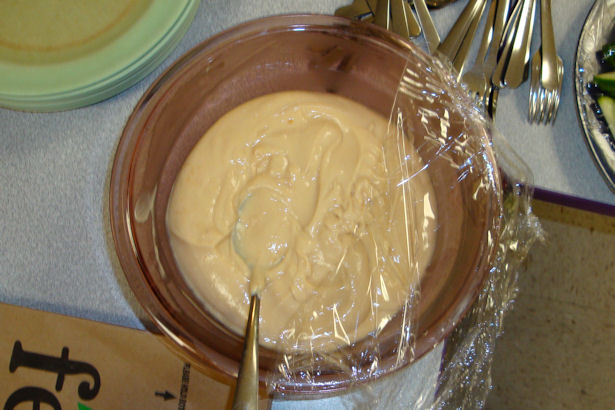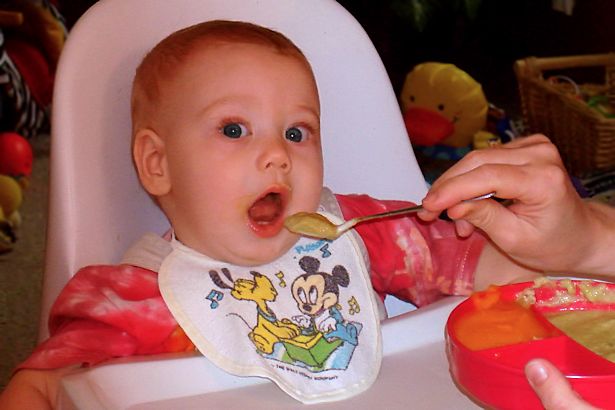Almost every month our Valley AEYC meeting includes continuing education, and last month’s training was Childhood Nutrition by my friend Dorothy and one of her co-workers, Sarah.
When I met Dorothy eight years ago she was morbidly obese – weighing over 350 pounds – was diabetic, had high blood pressure, and suffered from joint trouble.
After numerous unproductive efforts to lose weight and regain her health, Dorothy underwent gastric bypass surgery. It wasn’t an easy decision, and wasn’t an “easy out” by any means; it was simply another tool to use along with increased exercise and a healthy diet to lose pounds and maintain a healthy weight. Over time she’s lost 200 pounds, regained a healthy blood pressure, gotten rid of diabetes, and no longer has joint problems.
She’s also discovered a passion for promoting childhood nutrition and preventing childhood obesity.
Since good nutrition is also one of my passions I wanted to pass on what I learned at the training. Dorothy graciously sent me her notes so I could get the facts straight and gave me permission to take photos and write about the training – as long as there were no butt shots. Don’t worry Dorothy – I won’t post any photos of anyone else that I wouldn’t want posted of me!
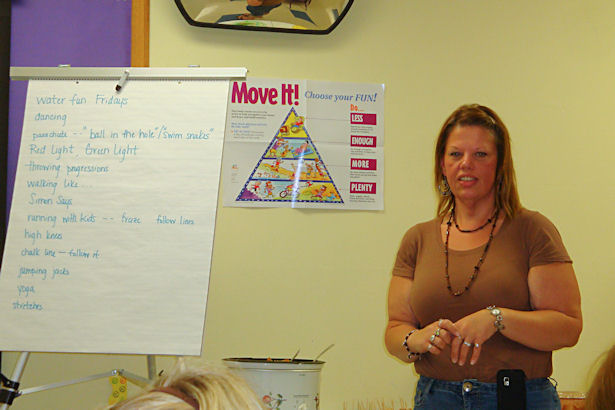 Things I learned from Dorothy…
Things I learned from Dorothy…
Basic Principles of Childhood Nutrition
- Eating – along with warmth, shelter, and sleep – is a basic biological need for all humans. Healthy eating habits are important for adults and vital for children’s growth and development.
- Since young children rely on adults to provide their food, adults have a moral and ethical responsibility to understand how nutrition affects children’s growth and development, and to provide the most nutritious foods they can.
- Some of the reasons for children to learn about good nutrition are to encourage them to develop positive attitudes about food, to help them enjoy a wide variety of foods, and to help them establish healthy eating habits when they’re young.
- Learning to like new foods is important because a wide variety of foods provides a wider source of nutrition.
Tips for Providing Nutritious Meals and Snacks:
- Choose unprocessed or minimally processed foods whenever possible; like fresh fruits and vegetables instead of canned.
- Prepare foods “from scratch” instead of buying boxed mixes.
- Read labels! Choose foods that are low in added sugar. Be careful; sugar comes in many disguises. Watch out for anything ending in “ose” like fructose, sucrose, lactose, glucose, dextrose, etc.
- Use solid fats – ie shortening and butter – and salt sparingly.
- Replace jam and jelly with fruit butters or all-fruit spreads, or omit them entirely.
- Switch children two and older to fat-free or 1% milk. And make the switch yourself, if you haven’t already. It’s an easy way to cut down on fat and calories.
Tips for Introducing New Foods
- Children are more likely to try a food that they’ve helped prepare themselves.
- Children often need to be exposed to a new food 12-15 times before accepting the food.
- Introduce new foods at the beginning of the meal when the child is more hungry.
- Children love to dip so provide something for children to dip new foods in. Favorites at our house include Ranch dressing, ketchup, barbeque sauce, and yogurt.
- Gently encourage, but don’t force, children to take a “practice bite” of the new food. But don’t make a big deal of it or you’ll end up with a power struggle you can’t win.
- Allow children to politely take a new food out of their mouths if they don’t like it; sometimes we adults do this with things we don’t like too.
- Allow the children to express their dislike of a new food, but encourage them to be polite about it. Not everyone likes every food, and that’s OK.
- Be a good role model; eat a wide variety of foods, and show enthusiasm when trying new foods.
This is where we got to the really fun stuff – trying the healthy foods Dorothy had prepared for us.
Let’s eat!
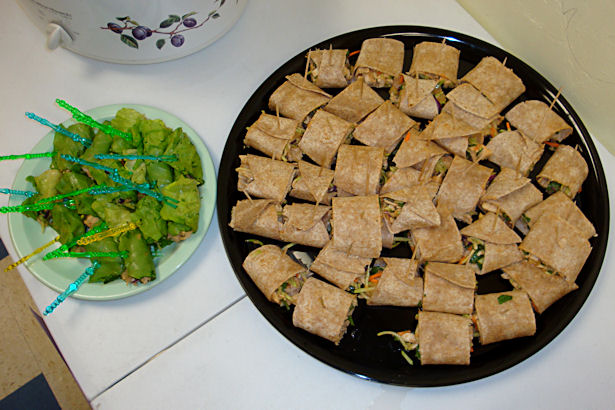 Crunchy Hawaiian Chicken Wraps: made with whole wheat tortillas or lettuce leaves for the carb-conscious.
Crunchy Hawaiian Chicken Wraps: made with whole wheat tortillas or lettuce leaves for the carb-conscious.
These were REALLY good – I’d definitely serve them to the child care or our family!
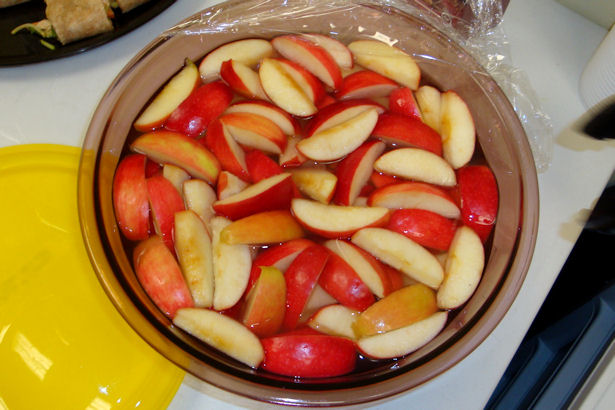 Sliced apples for…
Sliced apples for…
I have to admit I wasn’t fond of the dip; I’d rather eat straight PB on my apples, or just eat them plain. Lots of the other people at the training liked it though.
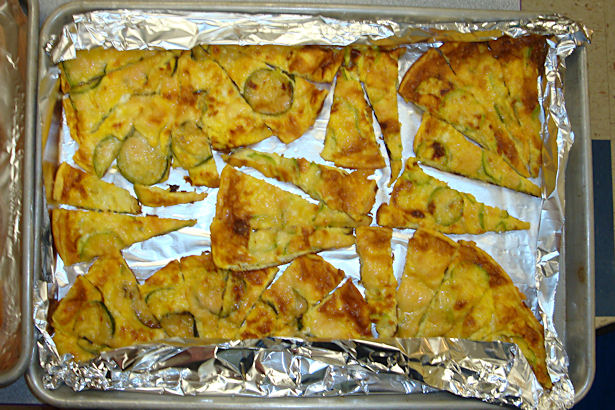 Zucchini Frittata; made in the oven so there’s less mess.
Zucchini Frittata; made in the oven so there’s less mess.
I love zucchini, Parmesan, eggs… so I obviously liked this one! The neat thing is that you can switch it up by using different veggies, like spinach, tomatoes, summer squash, etc, etc, etc.
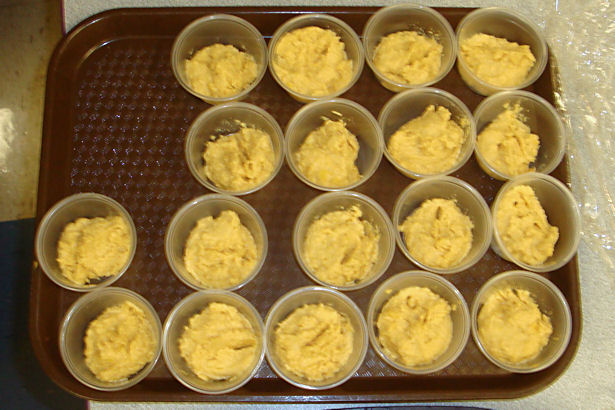
Homemade Dorothy-made hummus.
I just recently learned to like hummus so I’m still a bit picky about what kind I like. Dorothy’s was good, but a bit too peanut-buttery for me; I prefer Teacher’s more garlicky version that uses tahini instead of peanut butter.
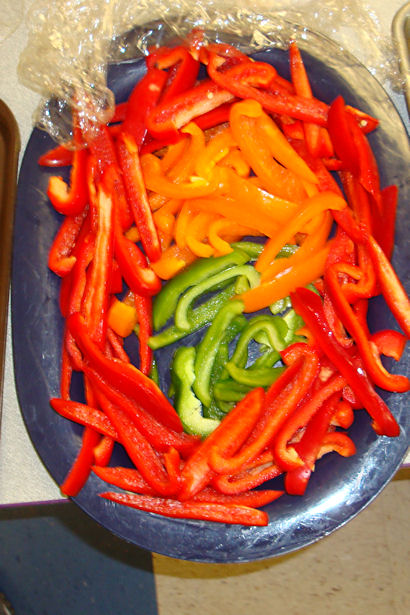 Colorful peppers to dip in the hummus.
Colorful peppers to dip in the hummus.
To be honest, I’m a poster child for the “12-15 tries” rule. When I was a kid I hated peppers, but I kept trying them and now I love them. Well, I love red, orange and yellow peppers; I’m still learning to like the green ones.
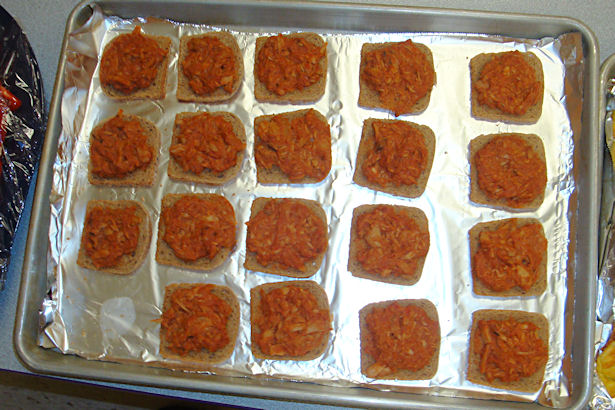 Tuna Joes – made by replacing the hamburger in traditional Sloppy Joes with tuna.
Tuna Joes – made by replacing the hamburger in traditional Sloppy Joes with tuna.
It was pretty good, but I missed the texture hamburger has so I’ll stick to my hamburger or ground turkey Joes for now.
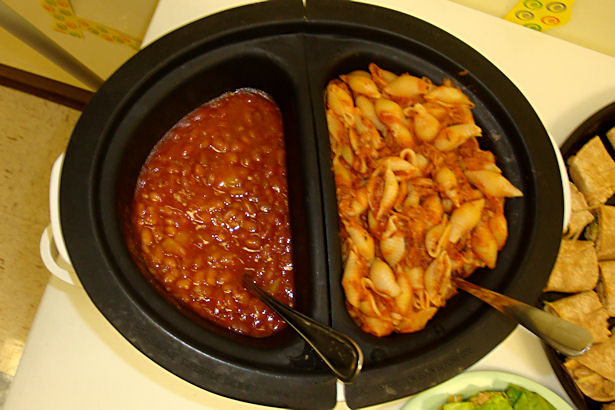 On the left is Hawaiian Beanies without Weenies: made by adding pineapple to canned pork and beans. I wasn’t fond of it, but I’m not fond of warm pineapple or sweet/sour flavors.
On the left is Hawaiian Beanies without Weenies: made by adding pineapple to canned pork and beans. I wasn’t fond of it, but I’m not fond of warm pineapple or sweet/sour flavors.
On the right is the thing I’d heard about for so long but was afraid to try: Italian Tuna. Dorothy had been raving about it for I-don’t-know-how-long, claiming that not only is it healthier than spaghetti and meatballs, but that the kids in her center like it a lot too. I was skeptical that pasta, spaghetti sauce and tuna would taste good together, but I was willing to try it. And I’m willing to admit I was wrong – it is good! I’d imagined a much saucier dish, but Dorothy found a good balance of sauce and tuna so it’s not too fishy or too saucy. I’d consider serving it to the child care, or even at home maybe.
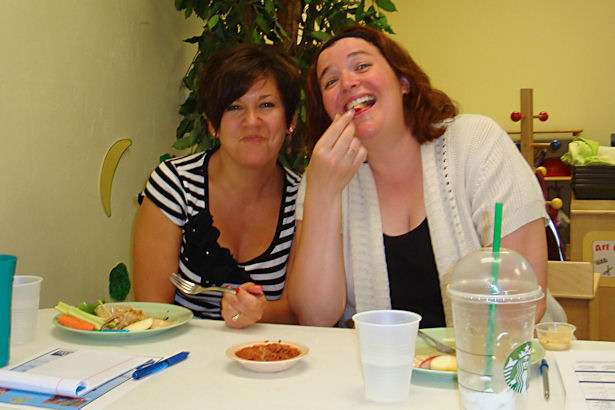 All in all, I think the night was a success: not only did we all learn more about promoting childhood nutrition, we also had fun tasting different foods and discovering new recipes to try in our programs.
All in all, I think the night was a success: not only did we all learn more about promoting childhood nutrition, we also had fun tasting different foods and discovering new recipes to try in our programs.
Thanks Dorothy and Sarah!


